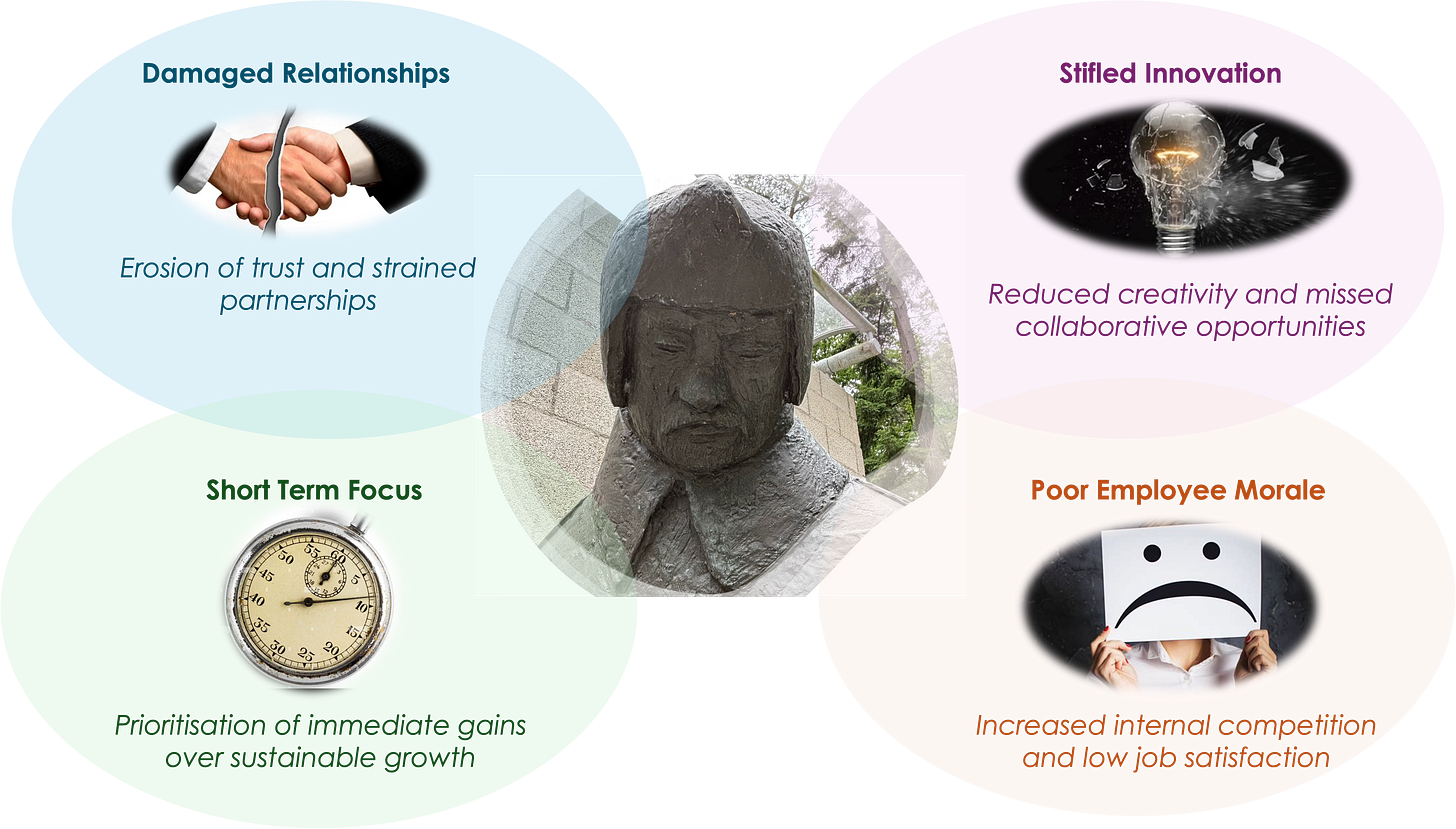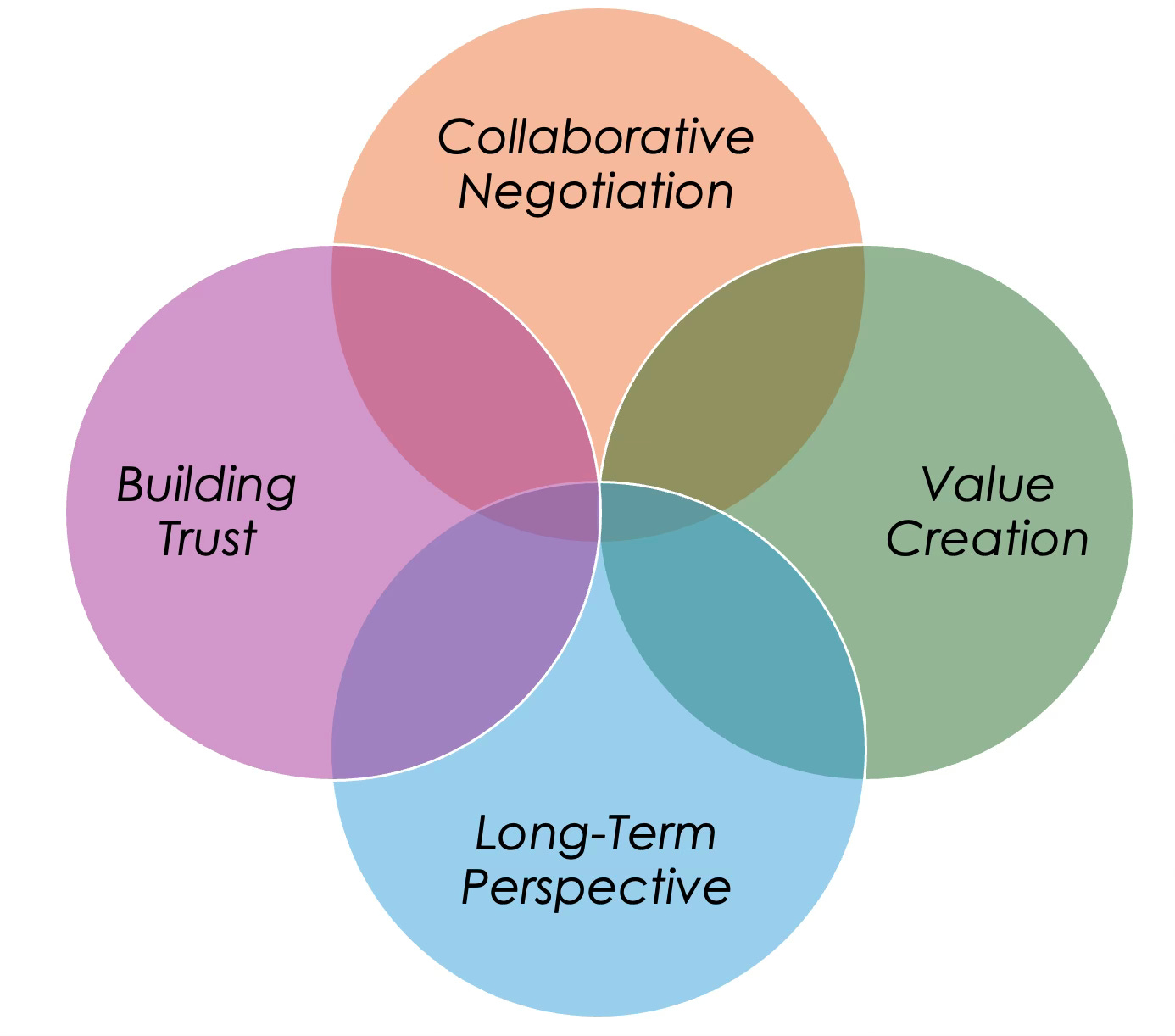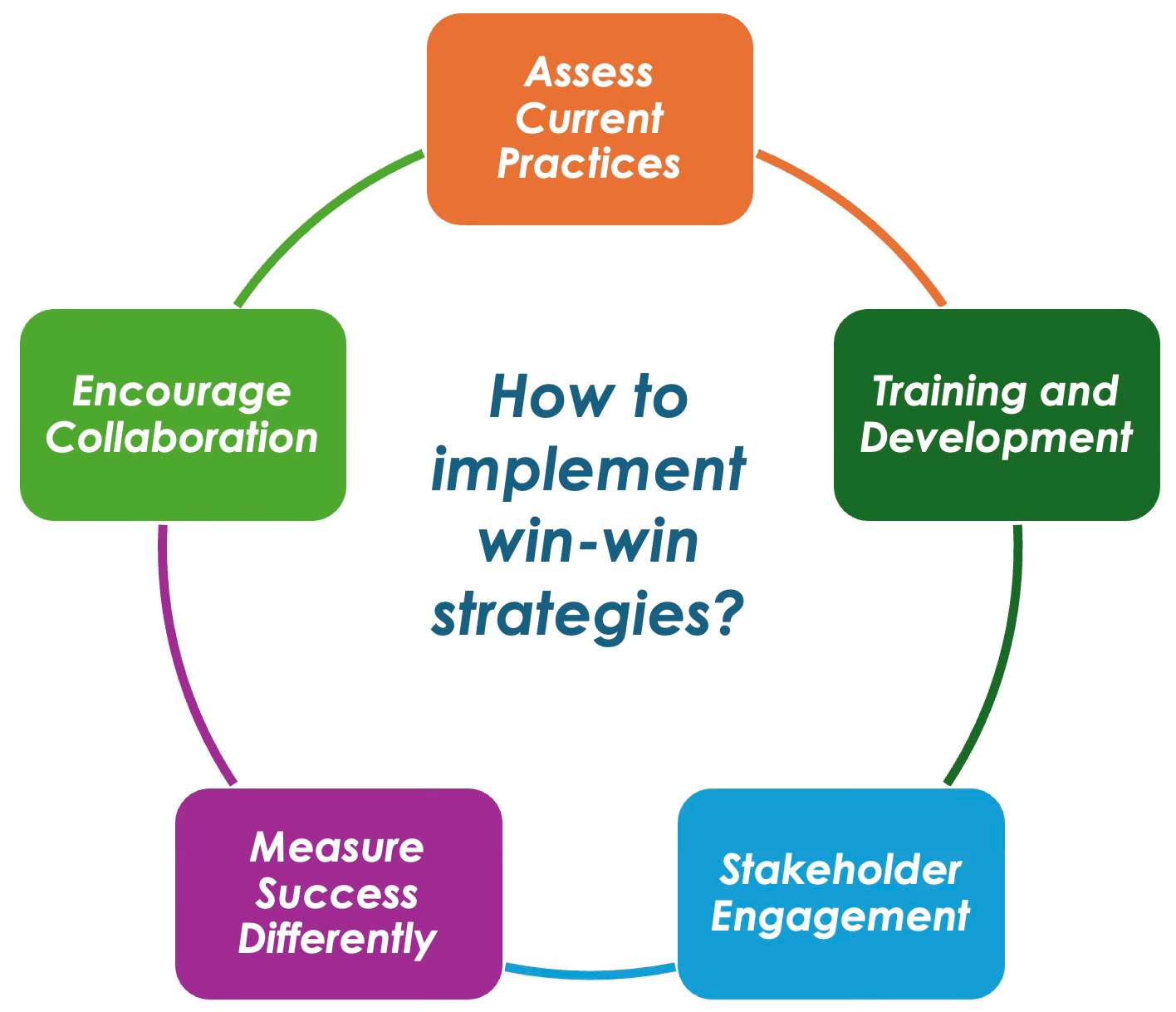The Zero-Sum Game Fallacy
Lessons from Oswald Wenckebach's 1957 sculpture "De Verslagen Overwinnaar" ("The Defeated Victor") for businesses
The Defeated Victor
This week I visited the excellent Kröller-Müller museum in the Netherlands. It’s a great museum, famed for its excellent van Gogh collection and extensive Sculpture Garden. This experience, and one statue in particular, triggered me to write this article.
In the world of business, competition is often viewed through the lens of a zero-sum game, where one party's gain is inherently another's loss. This perspective, however, can be limiting and detrimental to long-term success and innovation. The Dutch sculptor Oswald Wenckebach’s work, "De Verslagen Overwinnaar" (The Defeated Victor), offers a profound metaphor for the consequences of this narrow viewpoint. This article explores how Wenckebach’s statue can illuminate the pitfalls of zero-sum thinking in business and encourage a more collaborative, win-win approach.
Understanding "De Verslagen Overwinnaar"
Nestled amidst the scenic forests of Gelderland, the Kröller-Müller Museum is a cultural oasis, its galleries housing a remarkable collection of modern art treasures.
Yet, indeed, one sculpture in particular commands attention – Oswald Wenckebach's "De Verslagen Overwinnaar" (The Defeated Victor), created in 1957. This striking work depicts a warrior figure walking alone, slightly bent down, with no sword or weapon in hand. Yet the victor's face is frozen in an expression of anguish, their body crumpled and defeated despite the usual trappings of conquest being absent.
This striking paradox serves as a potent metaphor for a mindset that plagues the business world – the belief that every transaction is a zero-sum game where one party's gain inevitably means another's loss.
Oswald Wenckebach’s statue "De Verslagen Overwinnaar" depicts a figure that embodies both victory and defeat. This juxtaposition is a powerful reminder that success at the expense of others can often lead to a hollow triumph. The victor, despite his apparent success, is burdened by the weight of his conquest, symbolising the duality of winning and losing within the same outcome.
This sculpture serves as a poignant metaphor for business transactions viewed as zero-sum games. In such scenarios, companies may achieve short-term victories, but these often come with long-term costs, such as damaged relationships, lost trust, and missed opportunities for collaboration.
The Zero-Sum Game Fallacy
The zero-sum game concept originates from game theory, where one party’s gain equals the other party’s loss. This is applicable in certain competitive contexts, such as sports or poker, where resources are finite and the victory of one player inherently means the defeat of another. However, applying this mindset to business is both reductive and counterproductive.
In reality, business is not a closed system with fixed resources. It is a dynamic environment where value can be created, expanded, and shared. Viewing business interactions as zero-sum overlooks the potential for mutual gain and long-term partnerships.
The Consequences of Zero-Sum Thinking
When businesses operate under the zero-sum paradigm, several negative outcomes can arise.
1. Damaged Relationships - Treating business as a zero-sum game can strain relationships with clients, suppliers, and partners. When one party feels exploited or short-changed, trust erodes, making future cooperation difficult.
2. Stifled Innovation -Zero-sum thinking can stifle creativity and innovation. Companies overly focused on outdoing their competitors may neglect the pursuit of new ideas and collaborative opportunities that could benefit all parties involved.
3. Short-Term Focus - Businesses driven by zero-sum thinking often prioritise immediate gains over sustainable growth. This short-term focus can lead to decisions that are beneficial in the moment but detrimental in the long run.
4. Employee Morale - Internally, a zero-sum approach can create a toxic work environment. Employees may feel pitted against each other, fostering a culture of competition rather than cooperation.
Embracing a Win-Win Mindset
To counteract the pitfalls of zero-sum thinking, businesses should embrace a win-win mindset, where the aim is to create value for all parties involved. This approach fosters long-term relationships, drives innovation, and ultimately leads to more sustainable success. Here are key strategies to adopt this mindset.
1. Collaborative Negotiation - Instead of approaching negotiations with a combative attitude, aim for collaboration. Seek solutions that benefit all parties. This not only enhances the outcome but also builds stronger, more enduring relationships.
2. Value Creation - Focus on creating new value rather than simply redistributing existing resources. This can involve developing innovative products, exploring new markets, or finding synergies with partners.
3. Long-Term Perspective - Make decisions with a long-term perspective in mind. Consider the future impact on relationships, reputation, and the potential for ongoing collaboration.
4. Building Trust - Cultivate trust with stakeholders through transparency, consistency, and fairness. Trust is a critical component of any win-win relationship and can lead to more productive and amicable negotiations.
Case Studies in Win-Win Business Strategies
Several successful businesses have demonstrated the power of a win-win approach. Consider the following examples
1. Apple and its Suppliers
Apple is known for its collaborative approach with suppliers. By investing in their partners and working closely to improve processes, Apple ensures high-quality components while also helping suppliers to grow and innovate. This creates a win-win scenario where both Apple and its suppliers benefit from the relationship.
2. Starbucks and Fair Trade Coffee - Starbucks’ commitment to fair trade coffee is another example. By paying fair prices to coffee farmers, Starbucks supports sustainable farming practices and improves the livelihoods of farmers. In return, Starbucks secures a reliable supply of high-quality coffee, enhancing its product offering and brand reputation.
3. Toyota and its Lean Manufacturing - Toyota’s lean manufacturing principles, which focus on efficiency and waste reduction, have been widely adopted across industries. By sharing these practices, Toyota has not only improved its own operations but also helped suppliers and even competitors to enhance their efficiency, fostering a more robust industry.
Implementing a Win-Win Strategy in Your Business
Adopting a win-win strategy requires a shift in mindset and practices. Here are practical steps to help implement this approach in your business.
1. Assess Current Practices - Evaluate your current business practices and identify areas where a zero-sum mindset may be prevalent. Look for opportunities to shift towards more collaborative approaches.
2. Training and Development - Invest in training programmes that promote collaborative negotiation skills, creative problem-solving, and long-term strategic thinking among employees.
3. Stakeholder Engagement - Actively engage with stakeholders to understand their needs and concerns. Use this information to find mutually beneficial solutions.
4. Measure Success Differently - Redefine how success is measured within your organisation. Instead of focusing solely on financial metrics, consider factors such as relationship strength, customer satisfaction, and innovation outcomes.
5. Encourage Collaboration - Foster a culture of collaboration within your organisation. Encourage teamwork and reward employees for cooperative behaviour and the achievement of shared goals.
Conclusion: The Path to Sustainable Success
Oswald Wenckebach’s "De Verslagen Overwinnaar" serves as a stark reminder of the hollow nature of victories won at the expense of others. In the realm of business, adopting a zero-sum mindset can lead to damaged relationships, stifled innovation, and short-term thinking. By contrast, embracing a win-win approach fosters collaboration, drives innovation, and ensures sustainable success.
Business leaders should take inspiration from the lessons embedded in Wenckebach’s sculpture and strive to create value for all stakeholders. This shift in perspective not only enhances individual business outcomes but also contributes to a more robust and innovative business ecosystem.
By moving beyond the zero-sum game, businesses can achieve true, lasting victories that benefit everyone involved.









